Roll forming machines are a type of metal forming machine that is able to weld, bend and form shapes out of flat sheets of metal. This article covers the four parts of roll forming machine. It also covers the specification of roll forming machines and how they’re used today.
Introduction
A roll forming machine is a type of machine that is used to create long, narrow strips of metal. The metal is fed through the machine and formed into the desired shape by a series of rollers.
Roll forming machines can be used to create a variety of shapes, including: U-channels, C-channels, Z-channels, and more. They are commonly used in the construction and automotive industries. But do you know the main parts of roll forming machine?
The 4 Parts Of Roll Forming Machine
These following parts are 4 Parts Of Roll Forming Machine:
-An infeed table: This is where the metal strip is fed into the machine.
-A set of rollers: The rollers are what actually form the metal into the desired shape.
-A set of guide rails: The guide rails help to keep the metal strip aligned as it goes through the machine.
-An outfeed table: This is where the finished product comes out of the machine.
-
 Weld pipe roll forming machine
Weld pipe roll forming machine -
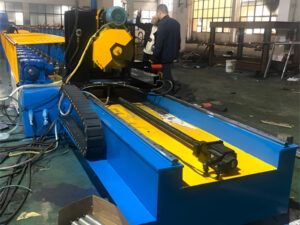 Joint Rack steel beam roll forming machine
Joint Rack steel beam roll forming machine -
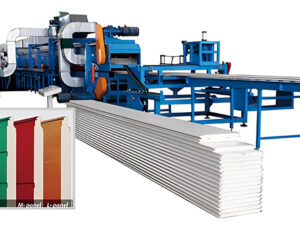 Garage door panel roll forming machine
Garage door panel roll forming machine -
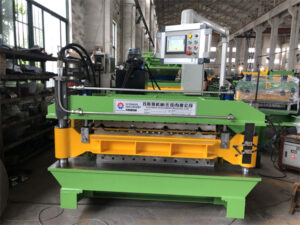 Double deck roll forming machine
Double deck roll forming machine -
 Color steel roll forming machine
Color steel roll forming machine -
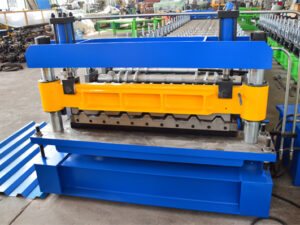 Wall panel roll forming machine
Wall panel roll forming machine -
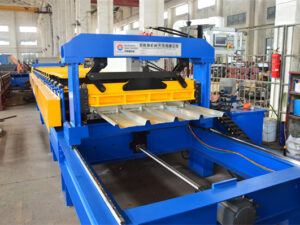 IBR roll forming machine
IBR roll forming machine -
 Half round glazed tile roll forming machine
Half round glazed tile roll forming machine -
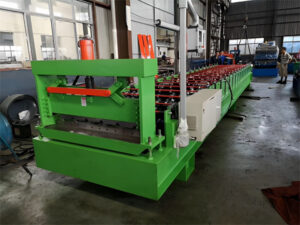 R panel roll forming machine
R panel roll forming machine
Types of Roll Forming Machines
There are a few different types of roll forming machines. The first type is the three-roll bending machine. This machine is used to create parts with a 90-degree bend. It has three rolls that work together to bend the metal.
The next type of roll forming machine is the four-roll bending machine. This machine is used to create parts with a 180-degree bend. It has four rolls that work together to bend the metal.
The last type of roll forming machine is the six-roll bending machine. This machine is used to create parts with a 360-degree bend. It has six rolls that work together to bend the metal.
Roll forming machines are essential for creating metal parts with bends. They come in a variety of sizes and shapes, depending on the type of bend you need to create.
Specifications of Roll Forming Machines
The specifications of roll forming machines can vary depending on the type of machine. However, there are some common specifications that all roll forming machines have.
The width of a roll forming machine is the distance between the two sides of the machine. The width can be adjustable, or it can be fixed. The fixed width is usually between 500mm and 1200mm. The adjustable width is usually between 100mm and 400mm.
The thickness of a roll forming machine is the distance between the top and bottom of the machine. The thickness can be adjustable, or it can be fixed. The fixed thickness is usually between 2mm and 6mm. The adjustable thickness is usually between 0.5mm and 1mm.
The speed of a roll forming machine is the speed at which the machine can operate. The speed can be adjustable, or it can be fixed. The fixed speed is usually between 0.5m/s and 1m/s. The adjustable speed is usually between 0.1m/s and 0.5m/s.
Overall, the specifications of roll forming machines can vary depending on the type of machine. However, there are some common specifications that all roll forming machines have.



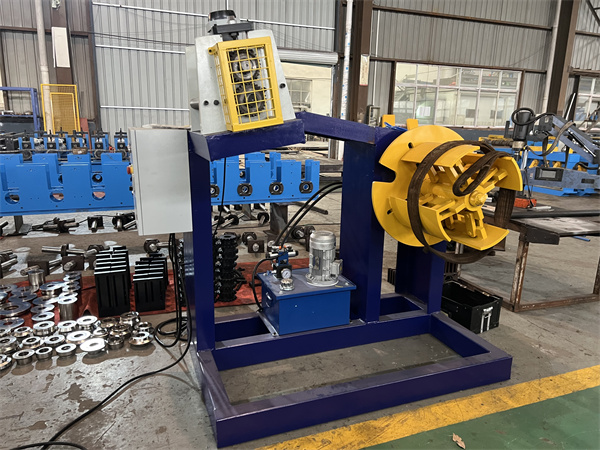


Cost of a Roll Forming Machine
The cost of a roll forming machine will vary depending on the size and capabilities of the machine. A small, basic roll forming machine may cost around $30,000. A larger, more complex roll forming machine can cost upwards of $100,000.
The size of the roll forming machine will also affect the price. A small machine may be able to produce parts for a few hundred feet of product, while a large machine can produce parts for several thousand feet of product. The larger the machine, the more expensive it will be.
The capabilities of the roll forming machine will also affect its price. A machine that can only produce simple parts will be less expensive than a machine that can produce complex parts. A machine that can produce parts for multiple products will be more expensive than a machine that can only produce parts for one product.
Overall, the cost of a roll forming machine will vary depending on its size, capabilities, and features.
Conclusion
In conclusion, the roll forming machine is a versatile tool that can be used to create a variety of parts for a wide range of applications. By understanding the basics of how the roll forming machine works, you can be sure to get the most out of your investment.
